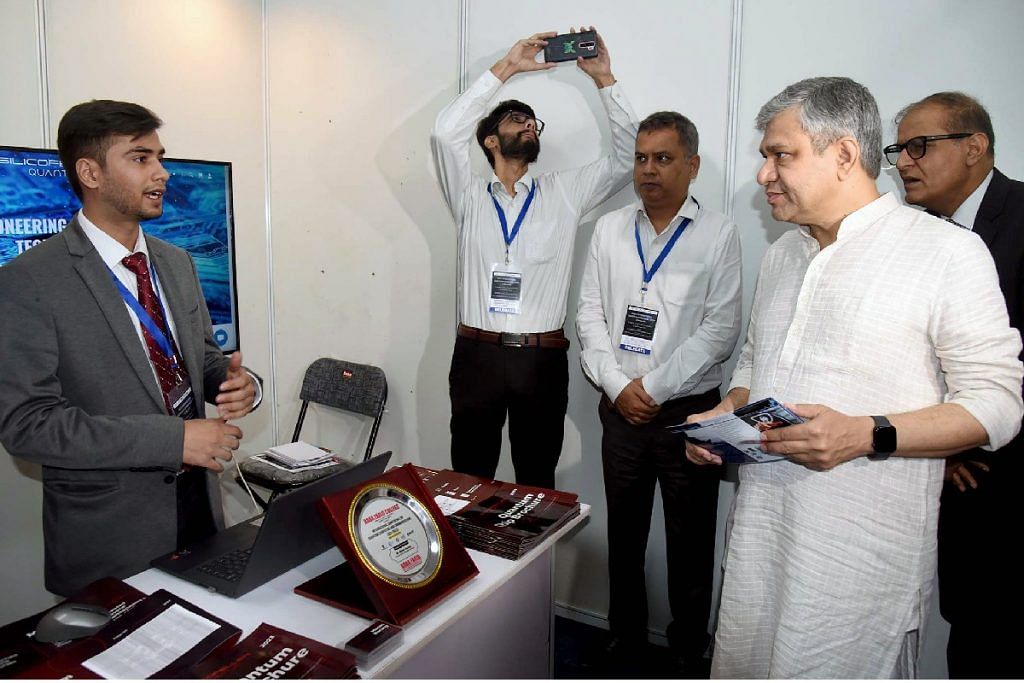New Delhi: The government Monday announced that the first quantum communication network is operational in the country and challenged ethical hackers to break the encryption on the network — offering them a reward of Rs 10 lakh per break.
Speaking at the inauguration of the two-day International Quantum Communications Conlclave, union minister for Communications, Electronics, and Information Technology Ashwini Vaishnaw said that India’s first quantum computing-based telecom network link is now operational between Sanchar Bhawan and the office of National Informatics Centre (NIC) at the Central Government Offices (CGO) Complex in Delhi.
“The first quantum secure communication link is now operational. Quantum is the new frontier of technology for security purposes, for cryptographic purposes,” the minister said.
Quantum communication refers to communication channels that leverage laws of quantum physics to protect data, and in theory, is much more secure than traditional ways of transmitting the data.
He added that the government decided to throw open a challenge to the public and the private sector to see whether they can break the ultra secure quantum communication system.
“We are also launching a hackathon for breaking this first quantum network. We will be giving Rs 10 lakh per break (breaking the encryption of the system),” the minister said.
Vaishnaw added that the Centre for Development of Telematics (C-DoT) will be the nodal agency for developing quantum communication.
Quantum communication is seen as the need of the hour to support secure data transfer across various sectors such as banking, defence, power distribution and healthcare.
Also Read: Cybercriminals ‘cloning’ Aadhaar biometric data to commit fraud: MHA nodal agency to states
Secure communication
On its website, in an introduction about the conclave, government-owned C-DoT, states that secure communication is always a challenge.
“The traditional key-based cryptography has become vulnerable for attacks. Today, hackers have adequate computing power to retrieve the key from the encrypted text in real time,” it states, adding that the loophole here is the continuation of the communication as the message sending party is unaware of the compromise.
In traditional key-based cryptography, the message is altered using a string of random characters (called the key). This is done to ensure that someone without the key cannot view the data.
As per C-DoT, an alert when the intruder meddles with the encrypted data or the key that gets transferred to the receiver would be very helpful to stop further damage.
“Quantum communication supports this paradigm. In addition, quantum computers can provide the much required computing power for breaking the key-based secure communication system. To protect the channels from such attacks, Post Quantum Cryptography [also known as quantum-resistant cryptography] is picking up,” it said.
Explaining how quantum communication works, Martin Giles, San Francisco bureau chief in an article in the MIT Technology Review — a magazine wholly owned by the Massachusetts Institute of Technology (MIT) — states that today the encrypted sensitive data is typically sent across fiber-optic cables and other channels together with the digital “keys” needed to decode the information.
“The data and the keys are sent as classical bits — a stream of electrical or optical pulses representing 1s and 0s. And that makes them vulnerable. Smart hackers can read and copy bits in transit without leaving a trace.”
He states that quantum communication takes advantage of the laws of quantum physics to protect data, that allow particles—typically photons of light for transmitting data along optical cables—to take on a state of superposition, which means they can represent multiple combinations of 1 and 0 simultaneously. The particles are known as quantum bits, or qubits. If a hacker tries to observe these qubits in transit, their super-fragile quantum state “collapses” to either 1 or 0.
“This means a hacker can’t tamper with the qubits without leaving behind a telltale sign of the activity,” the article states.
(Edited by Anumeha Saxena)
Also Read: How police, probe agencies are tackling growing menace of illegal call centres
